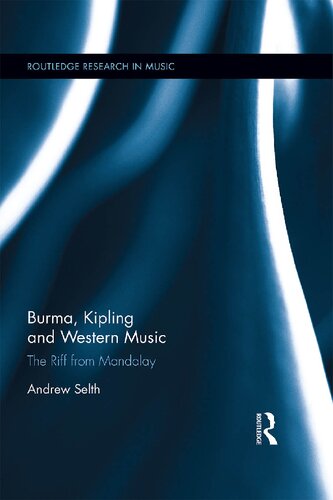

Most ebook files are in PDF format, so you can easily read them using various software such as Foxit Reader or directly on the Google Chrome browser.
Some ebook files are released by publishers in other formats such as .awz, .mobi, .epub, .fb2, etc. You may need to install specific software to read these formats on mobile/PC, such as Calibre.
Please read the tutorial at this link: https://ebookbell.com/faq
We offer FREE conversion to the popular formats you request; however, this may take some time. Therefore, right after payment, please email us, and we will try to provide the service as quickly as possible.
For some exceptional file formats or broken links (if any), please refrain from opening any disputes. Instead, email us first, and we will try to assist within a maximum of 6 hours.
EbookBell Team

5.0
108 reviewsFor decades, scholars have been trying to answer the question: how was colonial Burma perceived in and by the Western world, and how did people in countries like the United Kingdom and United States form their views? This book explores how Western perceptions of Burma were influenced by the popular music of the day. From the First Anglo-Burmese War of 1824-6 until Burma regained its independence in 1948, more than 180 musical works with Burma-related themes were written in English-speaking countries, in addition to the many hymns composed in and about Burma by Christian missionaries. Servicemen posted to Burma added to the lexicon with marches and ditties, and after 1913 most movies about Burma had their own distinctive scores. Taking Rudyard Kipling’s 1890 ballad ‘Mandalay’ as a critical turning point, this book surveys all these works with emphasis on popular songs and show tunes, also looking at classical works, ballet scores, hymns, soldiers’ songs, sea shanties, and film soundtracks. It examines how they influenced Western perceptions of Burma, and in turn reflected those views back to Western audiences. The book sheds new light not only on the West’s historical relationship with Burma, and the colonial music scene, but also Burma’s place in the development of popular music and the rise of the global music industry. In doing so, it makes an original contribution to the fields of musicology and Asian Studies.